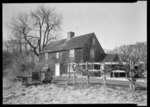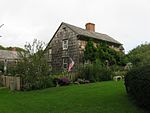Guild Hall of East Hampton
Guild Hall of East Hampton in the incorporated Village of East Hampton on Long Island's East End, is one of the United States' first multidisciplinary cultural institutions. Opened in 1931, it was designed by architect Aymar Embury II and includes a visual art museum with three galleries and the John Drew Theater, a 360 seat proscenium stage. It is historically significant for its role in exhibiting the works of the American Abstract expressionists Jackson Pollock, Willem de Kooning, Lee Krasner, John Ferren, and Robert Motherwell; performances by Helen Hayes, Thornton Wilder, Douglas Fairbanks, Jr., Bob Fosse and Gwen Verdon, Eli Wallach and Anne Jackson, and hundreds of other world-class stars of stage and screen; and involvement by the literary figures George Plimpton, Peter Matthiessen, Gore Vidal, Edward Albee, and John Steinbeck. It holds a permanent collection of 2,400 works of art and continues to build on important relationships in the worlds of film, theatre, dance, music, and visual art. The museum's current director is Andrea Grover, who was previously Curator of Special Projects of the Parrish Art Museum.
Excerpt from the Wikipedia article Guild Hall of East Hampton (License: CC BY-SA 3.0, Authors).Guild Hall of East Hampton
Main Street,
Geographical coordinates (GPS) Address External links Nearby Places Show on map
Geographical coordinates (GPS)
| Latitude | Longitude |
|---|---|
| N 40.9578 ° | E -72.1903 ° |
Address
Guild Hall
Main Street 158
11937
New York, United States
Open on Google Maps









